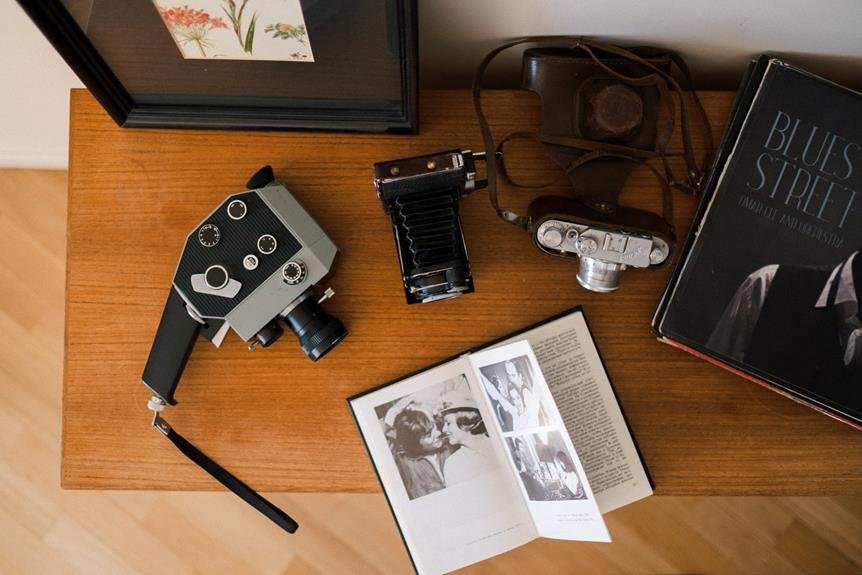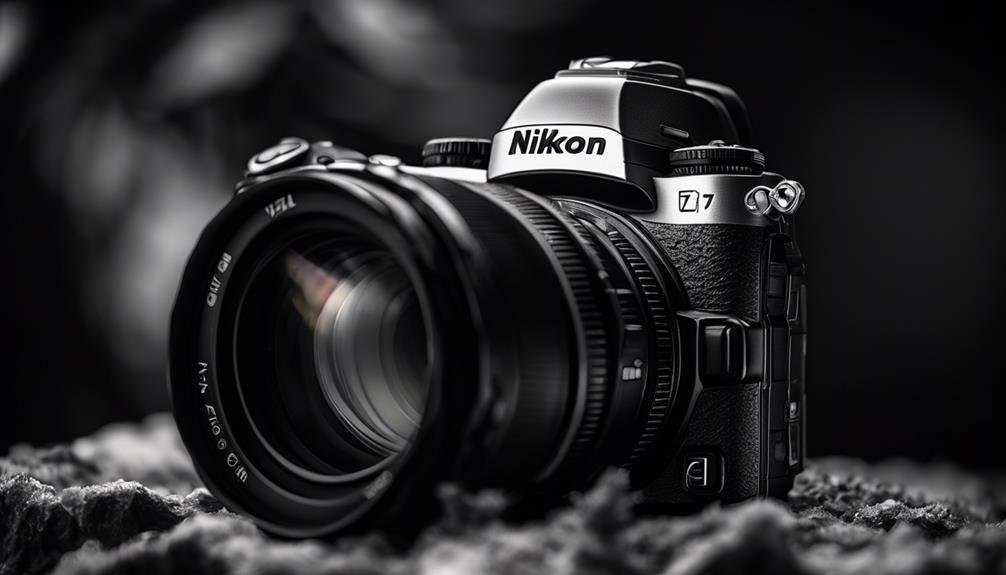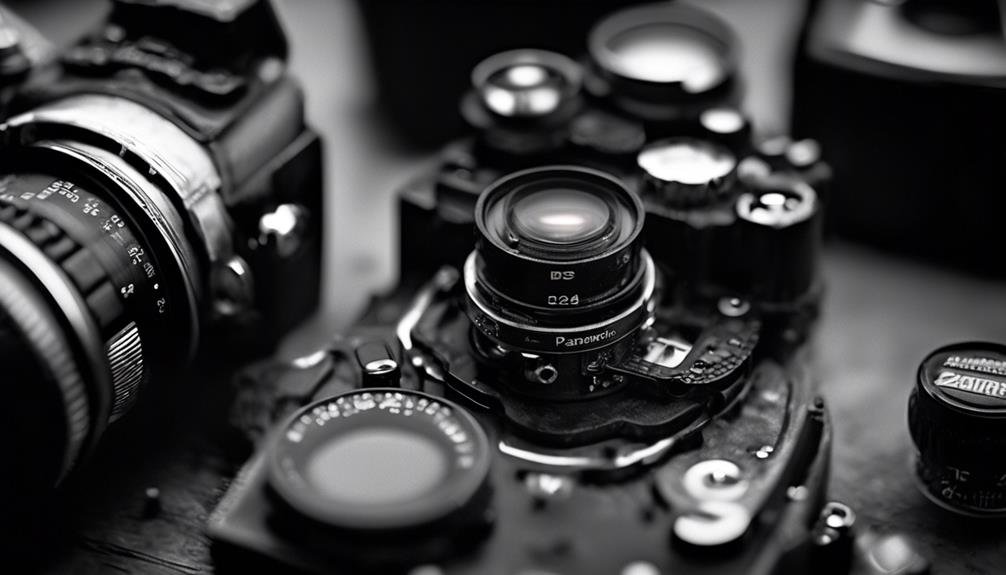
We've all heard the buzz about the latest image sensors in mirrorless cameras, but which ones truly stand out from the rest? With advancements in technology and the growing market for mirrorless cameras, it's essential to stay informed about the top image sensors driving these innovations. As we navigate through the diverse landscape of mirrorless cameras, it becomes evident that image sensors play a pivotal role in determining the overall image quality. But which sensors are leading the pack in terms of low-light performance, resolution, color science, and compactness? Let's explore the top image sensors for mirrorless cameras and uncover the key features that set them apart from the competition.
Sony IMX571: The Ultimate Sensor for Low-Light Performance
The Sony IMX571 sensor stands out as the ultimate solution for low-light performance in mirrorless cameras. Its advanced technology and sensor innovations make it a powerhouse for capturing stunning images in challenging lighting conditions. The IMX571 offers ultimate performance, pushing the boundaries of low light capabilities and setting new standards for image sensor excellence. With its impressive sensitivity and noise reduction capabilities, this sensor excels in producing high-quality images even in dimly lit environments.
One of the key factors that sets the Sony IMX571 apart is its ability to deliver exceptional image quality without compromising on detail, color accuracy, and sharpness in low-light settings. This is made possible through the sensor's innovative design, which optimizes light gathering efficiency and minimizes noise, resulting in clear and vibrant images.
Photographers and videographers who demand top-notch performance in challenging lighting conditions will appreciate the Sony IMX571 sensor for its unparalleled low-light capabilities. Whether capturing breathtaking nightscapes or shooting in dimly lit interiors, this sensor empowers creators to push the boundaries of their craft, delivering exceptional results in any lighting scenario.
Canon 32.5MP APS-C Sensor: A Versatile Choice for Enthusiasts
Pioneering a new era in sensor technology, Canon introduces the 32.5MP APS-C sensor, catering to the diverse needs of photography enthusiasts in various lighting conditions. This sensor is designed for versatile performance, delivering exceptional image quality and flexibility. Here's why the Canon 32.5MP APS-C sensor stands out:
- Enthusiast-Friendly Features: With advanced features like Dual Pixel CMOS AF and Eye Detection AF, this sensor empowers enthusiasts to capture stunning portraits with ease. The high-resolution sensor also provides the flexibility to crop images without compromising on details, offering creative freedom to photographers.
- Impressive Low-Light Performance: The sensor's impressive ISO range and low-light capabilities make it an ideal choice for shooting in challenging lighting conditions. It ensures that enthusiasts can confidently capture sharp, low-noise images even in dimly lit environments, expanding creative possibilities.
- Enhanced Dynamic Range: The sensor's wide dynamic range enables it to capture a broad spectrum of tones and details, from shadows to highlights, resulting in images with exceptional depth and clarity. This feature is particularly beneficial for enthusiasts who seek to capture scenes with varying light intensities, ensuring balanced exposure and rich image quality.
Nikon Z 7II 45.7MP Sensor: High-Resolution Excellence

Excelling in high-resolution imaging, the Nikon Z 7II 45.7MP sensor delivers exceptional detail and clarity for professional photographers and enthusiasts alike. This sensor's high megapixel count ensures that every nuance and texture is captured with stunning precision, making it an ideal choice for those who prioritize image quality. Moreover, the Z 7II's sensor is not only about still photography; it also offers impressive video capabilities. With its ability to capture 4K UHD video, this sensor empowers creators to produce high-quality content with exquisite details and dynamic range. Furthermore, the sensor's high-speed photography capabilities make it particularly versatile, enabling photographers to freeze fast-moving subjects with impeccable clarity. Whether it's capturing the intricate details of a landscape or the fast-paced action of a sporting event, the Nikon Z 7II 45.7MP sensor stands out as a top choice for those who demand uncompromising image quality, high-speed performance, and exceptional video capabilities.
Fujifilm X-Trans CMOS 4: Color Science and Detail Precision
With its advanced color science and precision in capturing details, the Fujifilm X-Trans CMOS 4 sensor offers a remarkable imaging experience for photographers and videographers. This sensor stands out due to:
- Color Accuracy: The X-Trans CMOS 4 sensor is renowned for its exceptional color accuracy, producing vibrant and true-to-life colors in images and videos. It enables photographers to capture scenes with remarkable fidelity, making it an ideal choice for professionals and enthusiasts alike.
- Noise Reduction Techniques: Fujifilm's X-Trans CMOS 4 sensor incorporates advanced noise reduction techniques, ensuring that images remain sharp and clear even in low-light conditions. This feature is invaluable for capturing intricate details without compromising image quality.
- Dynamic Range and Image Processing Algorithms: The sensor's impressive dynamic range and sophisticated image processing algorithms result in stunning images with rich tonality and fine details across highlights and shadows. This allows for greater flexibility in post-processing and ensures that every nuance of the scene is faithfully reproduced.
These capabilities make the Fujifilm X-Trans CMOS 4 sensor a top choice for those seeking cutting-edge technology that delivers exceptional color accuracy and detail precision.
Panasonic 20.3MP Micro Four Thirds Sensor: Compact and Powerful

The exceptional color accuracy and detail precision found in the Fujifilm X-Trans CMOS 4 sensor set a high standard for imaging quality, and now we turn our attention to the compact yet powerful Panasonic 20.3MP Micro Four Thirds Sensor. Despite its smaller sensor size compared to some APS-C counterparts, the Panasonic Micro Four Thirds sensor delivers impressive performance, thanks to its high megapixel count and advanced technology. This sensor strikes a balance between portability and image quality, making it an excellent choice for photographers and videographers who prioritize maneuverability without compromising on performance. The 20.3MP resolution ensures sharpness and clarity in images, while the Micro Four Thirds format enables the creation of smaller, lighter camera bodies and lenses, contributing to a more portable setup. Its performance in low light conditions and its ability to capture fast-moving subjects make it suitable for a wide range of photographic applications. The Panasonic 20.3MP Micro Four Thirds Sensor proves that big things can come in small packages, offering innovation and quality in a compact form.
Frequently Asked Questions
Can These Image Sensors Be Used in Both Photo and Video Modes?
Like a beacon in the night, these image sensors shine in both photo and video modes. Their low light performance and sensor stabilization make them ideal for capturing stunning moments, while ensuring fast autofocus speed and preventing sensor overheating.
Are There Any Compatibility Issues With Using These Sensors With Different Lens Mounts?
We haven't encountered any compatibility issues with using these sensors with different lens mounts. We've explored various lens options and found that firmware updates have resolved any initial concerns about sensor limitations.
How Do These Sensors Compare in Terms of Dynamic Range and Color Accuracy?
When comparing image sensors for mirrorless cameras, we find that sensor size greatly impacts dynamic range and color accuracy. Additionally, noise performance, low light capabilities, and resolution vary across different sensor types.
Are There Any Specific Software or Firmware Updates Required to Fully Utilize the Capabilities of These Sensors?
To fully utilize these sensors, firmware updates and software compatibility are crucial. Our team ensures the seamless integration of these updates, maximizing the capabilities of the sensors and providing innovative solutions for our users.
What Are the Potential Limitations or Drawbacks of Each of These Image Sensors?
When considering image sensors, it's vital to weigh their limitations and performance tradeoffs. Sensor size directly impacts noise levels, influencing overall image quality. Understanding these factors helps us make informed decisions for optimal camera performance.
